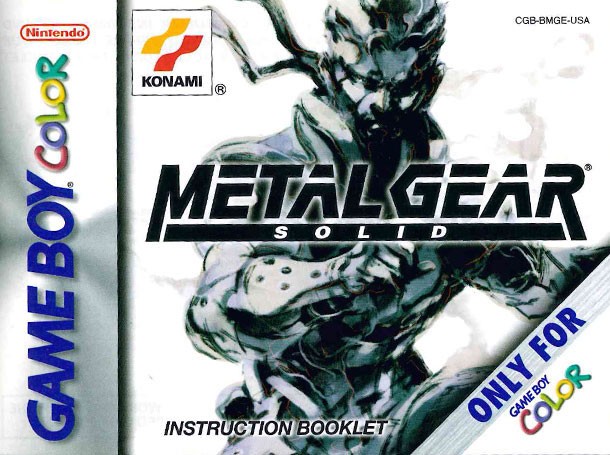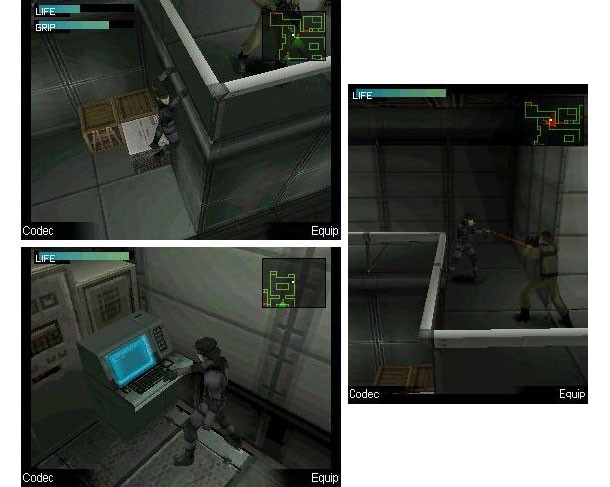Looking At Metal Gear’s Non-Canonical Entries

We're all playing Metal Gear Solid V: The Phantom Pain right now, and as a result, we all have the series' complicated lore and story on our minds. Not all of Metal Gear's entries, however, play into the tricky narrative of Big Boss and his clones. There are a number of Metal Gear games that serve as standalone entries with no ties to the larger series. We wrote this feature collecting these games back when we featured Metal Gear Solid V was on our cover, but thought now would be the perfect time to reshare it. This feature originally published on February 18, 2014.
Metal Gear has been all over Game Informer this month, on both our cover and the site. While it has me excited about the main story of Big Boss and Solid Snake, it also got me curious about the Metal Gear games that exist outside of the main universe canon.
These games stand completely separate from the story of Big Boss and his cloned children with state-of-matter first names, but are Metal Gear games nonetheless. Only one of these games did not have series creator Hideo Kojima’s direct participation.

Snake’s Revenge – NES
While Japan got a true sequel to the innovative Metal Gear from Hideo Kojima for the MSX, North Americans and Europeans got a game that not only dropped the Metal Gear name, but also the game’s creator and core stealth mechanic. Rumor has it that Hideo Kojima wasn’t even aware of the game, and was told about it during a chance meeting with one of the developers of Snake’s Revenge.
Despite lacking Kojima’s touch, the game falls in line with many of Metal Gear’s themes and gameplay objectives. As Snake, you infiltrate an enemy base guns-a-blazing to defeat a newly reconstructed Metal Gear. Snake confronts imposters, makes contact with double-agents, and defeats a cybernetic Big Boss before making it out alive.
Unfortunately, that is where that alternate version of Snake ends; the true, canon sequel to Metal Gear – Metal Gear II: Solid Snake – released in Japan shortly after.

Metal Gear Solid (Metal Gear Solid: Ghost Babel) – Game Boy Color
In North America, the game was simply called Metal Gear Solid, but in Japan the game received the subtitle Ghost Babel. Despite the confusing namesake for the U.S. release, it is not a remake of the PlayStation Metal Gear Solid, which released a couple years prior. Instead, the game serves as an alternate sequel to Metal Gear for the MSX.
Hideo Kojima received an original planning and story credit in the game’s closing. It borrows visual inspiration and gameplay mechanics from Metal Gear II: Solid Snake, and even Metal Gear Solid on PlayStation, despite being a Game Boy game. You can crawl on the ground, smoke cigarettes to reveal security lasers, and press your back up against corners to both get a better view and knock on the wall to attract attention. We gave the game a 9.25 when it released in 2000, highlighting its story and mechanics as incredibly impressive for a Game Boy game.
The game follows Snake as he infiltrates a base of terrorists who recently hijacked a reassembled Metal Gear. Everything you know from Metal Gear Solid transfers to the handheld with lengthy-but-interesting codec conversations, and a cast of boss characters with bizarre backstories and strange powers and specialties.

Metal Gear Acid and Metal Gear Acid 2 – PSP, Japanese Mobile Devices
The Acid series (or Ac!d if you stick to the goofy official logo) marks the largest sidestep from traditional Metal Gear games. Hideo Kojima had a producer role on the games, but both were directed by Shinta Nojiri, who had an integral role in Ghost Babel.
The Acid games are about card collecting and tactical turn-based battles. Playing cards allows players to attack enemies and move on a grid through environments. Players excel by building the best decks possible (think Magic: The Gathering) and strategically moving Snake across the battlefield.
The two games stand apart from any established Metal Gear timeline, but references to other games in the series (including Ghost Babel) appear on the cards used in the game. Solid Snake is basically the character we know and love, but you won’t find strong connections to other Metal Gear games aside from referential item or weapon cards.

Metal Gear Solid Mobile – N-Gage and Verizon mobile phones
Released for the N-Gage and Verizon phones, Metal Gear Solid Mobile could be interpreted as the missing link between Metal Gear Solid and Metal Gear Solid 2: Sons of Liberty, but its canonical merit is up for debate. The game’s story covers the period of time that Snake and Otacon team-up to create Philanthropy, their anti-Metal Gear group.
Kojima has never confirmed its inclusion in the Metal Gear story, but it’s tricky to take what Kojima says or doesn’t say about his world at face value. The game is absent from the Metal Gear Solid 4 Database – a Metal Gear encyclopedia of sorts released on the PlayStation Network around the time of Metal Gear Solid 4. The database and Metal Gear Solid Mobile released in the same year, so its absence might just be a result of timing.
Outside of the above reasoning for why it might not be canon, the story does fits between Metal Gear Solid and Metal Gear Solid 2 correctly. I haven’t played the game personally due to its platform limitations, but it places a kidnapped Snake in a virtual simulation – one that Otacon is forced to pull him from with his hacking abilities. After completing the simulation, Snake’s memory gets wiped of the whole incident by his captors. The game ends with a voice saying, “Let’s see if Jack can do better,” after explaining that Snake did not give them the data they needed.
For more Metal Gear Solid, check out all of our coverage from this month on our hub by clicking the banner below.

Get the Game Informer Print Edition!
Explore your favorite games in premium print format, delivered to your door.
- 10 issues per year
- Only $4.80 per issue
- Full digital magazine archive access
- Since 1991










